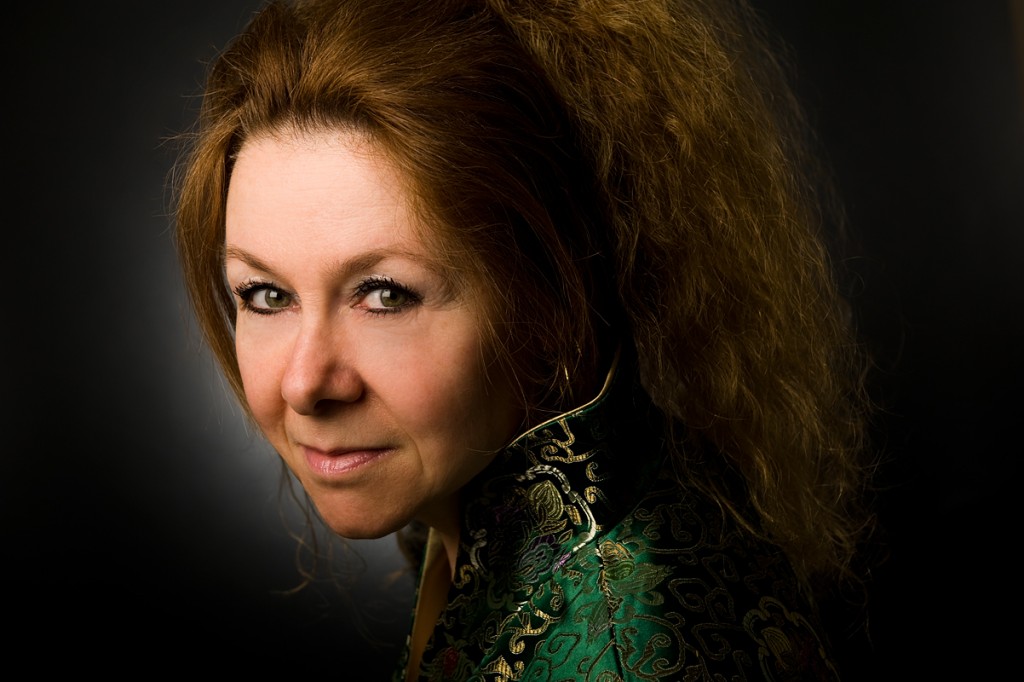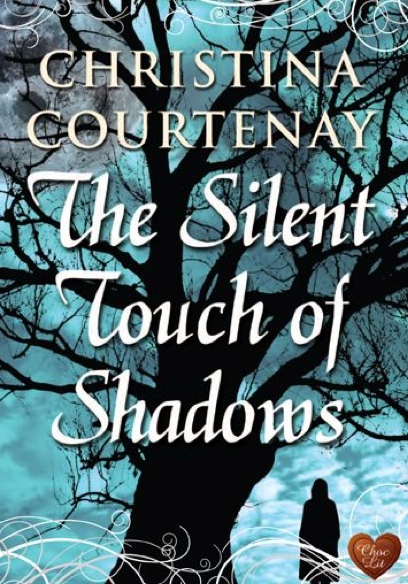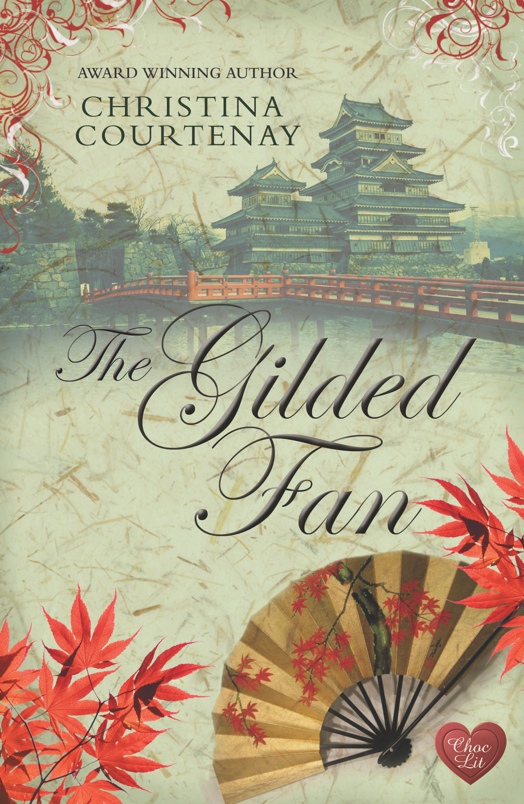 I’m delighted to welcome Christina Courtenay to my blog today. She’s currently Vice Chairman of the Romantic Novelists’ Association and a member of The Historical Novel Society. Her debut novel, Trade Winds, was short-listed for the RNA’s Pure Passion Award for Best Historical Fiction 2011. Her second novel, The Scarlet Kimono won Best Historical Fiction prize for the Big Red Read 2011 and her third novel, Highland Storms, won the RoNA Award for Best Historical Romantic Novel 2012.
I’m delighted to welcome Christina Courtenay to my blog today. She’s currently Vice Chairman of the Romantic Novelists’ Association and a member of The Historical Novel Society. Her debut novel, Trade Winds, was short-listed for the RNA’s Pure Passion Award for Best Historical Fiction 2011. Her second novel, The Scarlet Kimono won Best Historical Fiction prize for the Big Red Read 2011 and her third novel, Highland Storms, won the RoNA Award for Best Historical Romantic Novel 2012.
Many of your novels are set in far-flung, exotic locations. What attracts you in particular to the Far East?
I lived in Japan for three years when I was a teenager (and continued to visit for the next seven years after that since my parents stayed on when I went to uni) and I just fell in love with the place. It’s fascinating, different, awesome – all the adjectives you can think of! Japan in particular, as they have this amazing ability of combining the modern with tradition in a way we don’t always manage here. Everything they do is aesthetically pleasing – the architecture, clothing, art and everyday items. Even food is displayed in tasteful arrangements!
When did you start writing and was there a trigger?
I started writing when my older daughter was six months because I wanted to stay at home with her and still earn some money. I’d just read a lot of Mills & Boon books while I was pregnant with her and thought ‘how hard can it be to write one?’ I sent for their guidelines and got started. Needless to say, it wasn’t easy at all and they rejected my stories, even though I sent them two to choose from <LOL>! I eventually got published a week after my daughter left home, aged 21.
What draws you to historical fiction?
I’ve always loved history, ever since I was a little girl who adored fairy tales. I loved learning about times gone by and was really pleased to discover that there were novels set in the past too. As soon as I found Georgette Heyer, I was hooked on the genre.
Your characters often cross cultures, leaving behind their roots. Is this an extra layer of conflict for them you deliberately build in or is this something you base on your own background?
I like to challenge my characters and give them difficulties to overcome and it’s fun to see how a hero and heroine from different cultures interact and learn to accept each others’ differences. But yes, I suppose it’s really based on my own experiences. I left behind a secure life in Sweden for the unknown of a huge metropolis in a country where I couldn’t even read the road signs! That was terrifying, but ultimately very rewarding.
 I loved The Silent Touch of Shadows which connects 15th century and present day lives and builds to a very tense pressure point. This is quite different from your previous books when the protagonists embark on long, often dangerous, journeys. How do you flex your writing muscles on such different projects?
I loved The Silent Touch of Shadows which connects 15th century and present day lives and builds to a very tense pressure point. This is quite different from your previous books when the protagonists embark on long, often dangerous, journeys. How do you flex your writing muscles on such different projects?
I often work on several different stories at the same time – what can I say? I have a low boredom threshold. 🙂 I like reading more than one genre, so it’s the same with writing. Variety is good! I just work on whichever one I feel most inspired about.
To plot or not to plot? Are you a planner or do you just dive in?
I just dive in. I usually have one scene very clear in my mind and I start with that. It can be anywhere in the book so I have to work backwards and forwards from that point to build the story. But I’m definitely a ‘pantser’ – I only plot when I get stuck. Then I try to write an outline for where I want the story to go next.
What is the hardest part of the writing process for you?
The editing/rewrites asked for by the copy editor once a book has been accepted for publication. By that time you know the story is going to go out into the world (as opposed to being something only you have seen) and you want to make it the best you can. It’s scary!
Do you enjoy research, and how do you set about it?
No, I hate research! I’m very impatient and just want to get on with writing, but unfortunately with historicals that’s not possible. I start by reading up on the period and setting in general, then finding out about specific things that might fit into my story. I then learn about clothing, customs of the time, food, etc. and then I sit down to write. As the story unfolds, there will be other things I need to know, but I research those as and when I come across them.
How do you develop your characters? Or does the plot come first?
I start with one scene, which usually has the two main characters in it, so I guess you could say I start with them. Their goals and motivations will dictate what happens to them after that. Often the plot evolves during my research time as I can come across things which just happen to fit perfectly.
Which authors who have influenced you?
Georgette Heyer, of course, as she’s the absolute master (mistress?) of historical romance with wonderfully subtle humour throughout. Barbara Erskine – her Lady of Hay made me want to write time slips. Elizabeth Chadwick for impeccable historical backgrounds and characters. Diana Gabaldon – like her, I adore the Scottish Highlands. I’m sure there are many more (I have the same problem, Christina!).
How do you relax? What interests do you have other than writing?
Read, eat chocolate, go to the movies, gardening (this is a recent addition!), walk my dogs, DIY projects, genealogy … too many really, too little time!
Are you into social networking, and in what way do you feel it helps your career?
I’m on Twitter and Facebook (although I don’t feel I have enough time to keep up properly with either, I do my best!) and I blog, both on my own blog and several different group blogs. I love connecting with other authors and readers and have met some lovely people through all these mediums. It’s so nice to chat to others with the same interests.
What is your latest book?
The Gilded Fan, which is the sequel to The Scarlet Kimono. Set in 1640s Japan and England, it is the story of a half-English girl who has to flee Japan when the ruler decides to evict all foreigners. She manages to persuade the captain of a Dutch trading ship to give her passage to Europe, but that’s just the beginning of her adventures … (More after the interview – see below.)
Can you tell us something of your work in progress?
At the moment I’m working on the third book in the Kinross trilogy. Trade Winds was about Killian Kinross, a Scotsman who went to Sweden to make his fortune. Highland Storms was about his older son, Brice, and now I’m writing about Jamie, the second son. Jamie has always been a bit wild and caused his older brother no end of heartache in Highland Storms, but it wasn’t intentional so I wanted to tell his side of the story too. And perhaps find him a girl who could tame him a little. 😉
And finally, what advice would you give a new writer?
The usual one – persevere (see the second question) and find a writing buddy, someone to swap critiques with, someone who you trust. Mine have kept me sane so they’re worth their weight in gold!
Thank you, Christina, for submitting to such a grilling.
 The Gilded Fan sounds so intriguing – you know I love stories in out of the ordinary settings. 😉 So let’s see what it’s about…
The Gilded Fan sounds so intriguing – you know I love stories in out of the ordinary settings. 😉 So let’s see what it’s about…
How do you start a new life, leaving behind all you love?
It’s 1641, and when Midori Kumashiro, the orphaned daughter of a warlord, is told she has to leave Japan or die, she has no choice but to flee to England. Midori is trained in the arts of war, but is that enough to help her survive a journey, with a lecherous crew and an attractive captain she doesn’t trust?
Having come to Nagasaki to trade, the last thing Captain Nico Noordholt wants is a female passenger, especially a beautiful one. How can he protect her from his crew when he can’t keep his own eyes off her?
During their journey, Nico and Midori form a tentative bond, but they both have secrets that can change everything. When they arrive in England, a civil war is brewing, and only by standing together can they hope to survive …
You can read an extract here, buy the paperback here and the Kindle version here.
Update 2023:
Alison Morton is the author of Roma Nova thrillers – INCEPTIO, CARINA (novella), PERFIDITAS, SUCCESSIO, AURELIA, NEXUS (novella), INSURRECTIO and RETALIO, and ROMA NOVA EXTRA, a collection of short stories. Audiobooks are available for four of the series. Double Identity, a contemporary conspiracy, starts a new series of thrillers. JULIA PRIMA, Roma Nova story set in the late 4th century, starts the Foundation stories. The sequel, EXSILIUM, will be out in February 2024.
Find out more about Roma Nova, its origins, stories and heroines and taste world the latest contemporary thriller Double Identity… Download ‘Welcome to Alison Morton’s Thriller Worlds’, a FREE eBook, as a thank you gift when you sign up to Alison’s monthly email update. You’ll also be among the first to know about news and book progress before everybody else, and take part in giveaways.













A very interesting interview, Christina and Alison. Thank you for it.
I loved The Scarlet Kimono and can’t wait to read The Gilded Fan.
Liz X
Such an interesting interviewee! Christina draws on her deep and personal knowledge of the East but with the benefit an outsider’s eye – perfect.
I really enjoyed the interview, both questions and Christina’s replies. She is an author I haven’t read yet, but definitely will do asap.
Recommended!
Thank you for having me as your guest – some great questions! And thank you for calilng me ‘exotic’, I quite like that 😀
Well, your photo with the high collar and the luscious lighting help. 🙂 Glad you enjoyed your visit to my blog today.
Thank you, Denise, glad you enjoyed the interview!
Alison – thank you, I do like this photo myself (which is rare!), it’s courtesy of the lovely Marte Lundby Rekaa 🙂
Yes, I thought ‘exotic’ was a lovely label, Christina and Alison! I tend to be called things like ‘busy’ which isn’t nearly as interesting. Great interview.
That’s a great interview (and fab photo too!). I thought it was fascinating that Christina mentions working on more than one project at once – maybe that’s one of the secrets of her awesome work rate? I think I’m going to have to try that to see if it works for me too – but I suspect Christina’s being modest and is also phenomenally hard-working. Great to see her enjoying well-deserved success.
A great interview – both questions and answers. I’d like to ask a question if i may? I was always told that the Japanese have the tidiest rubbish in the world because they put it all in neat little parcles and tie it up. Is this true, Christina?
Great interview, both. I tend to follow your approach to plotting, Christina – always good to know one isn’t alone!
Thanks Sue – being called ‘busy’ may not sound as interesting, but it means you get things done 🙂
Christine – thank you too, I’m sure you work just as hard! But having different projects on the go can be fun and it helps to have something else to do when you get stuck on one of them.
Thanks Linda – to be honest, I have no idea! But I do know they are very neat and tidy in everything they do, so it wouldn’t surprise me. They certainly keep the streets very clean!
Dave – yes always good to know you’re not the only one! I feel my approach is very chaotic, but it works for me – glad it works for you too 🙂
That was a fascinating interview, Christina. I was interested to see that you work on more than one project at a time. That must be challenging, sometimes exhausting and frustrating but it certainly would ensure you were never bored:)
Thanks, Beverley! Yes, it can be great fun to have more than one story on the go, although you’re right, it can get frustrating too 🙂 Usually I really enjoy it!
Comments are now closed. The lucky winner will be announced tomorrow!